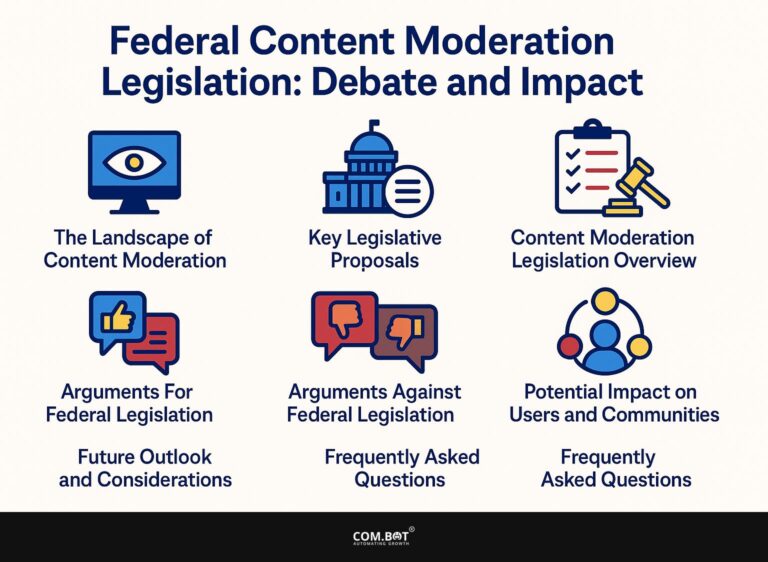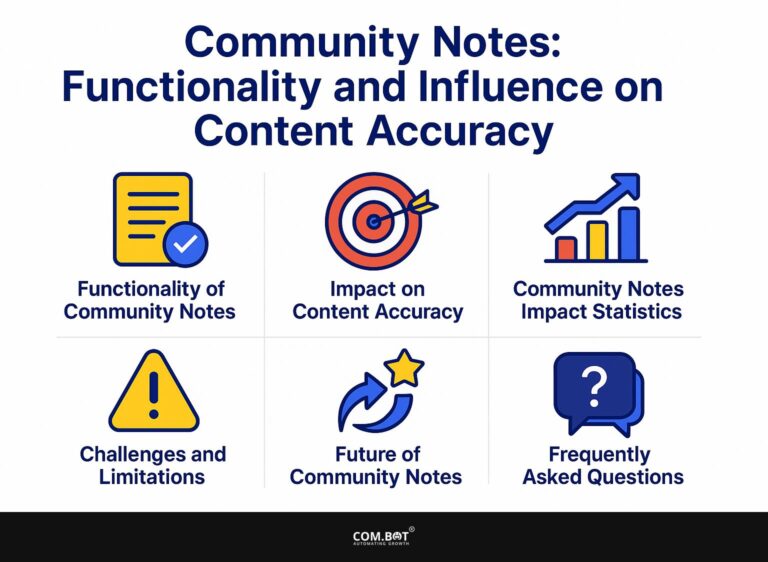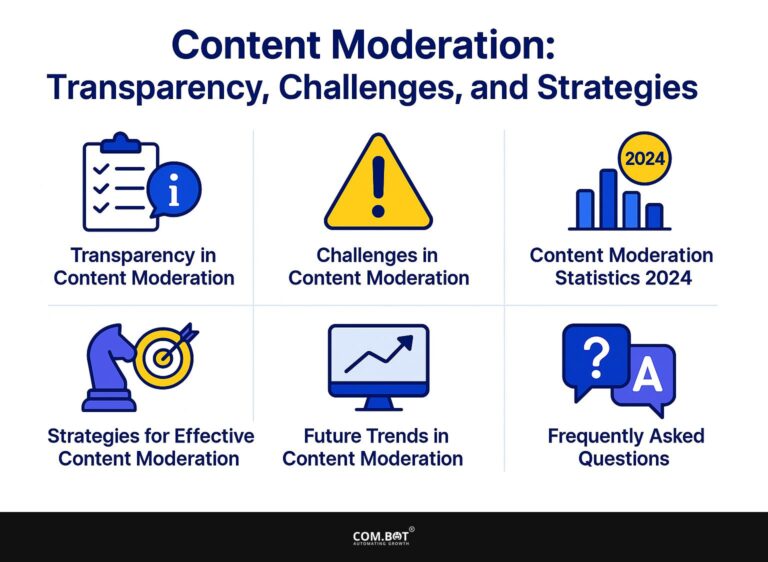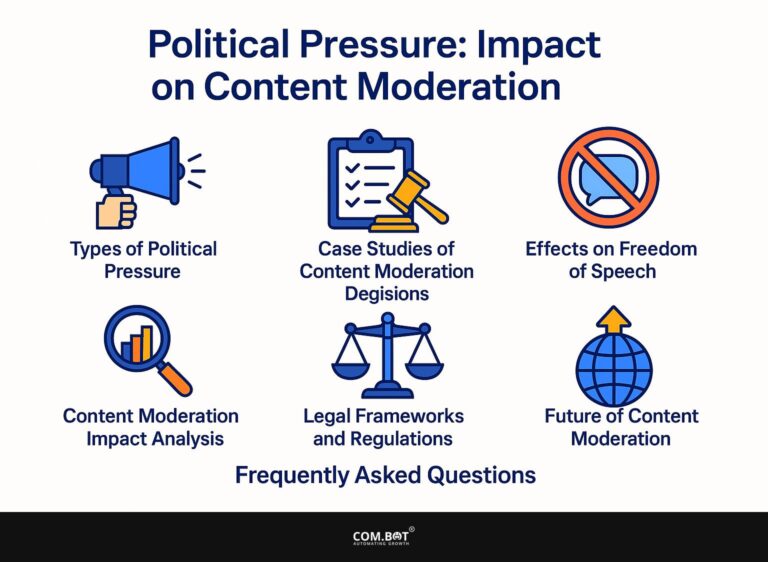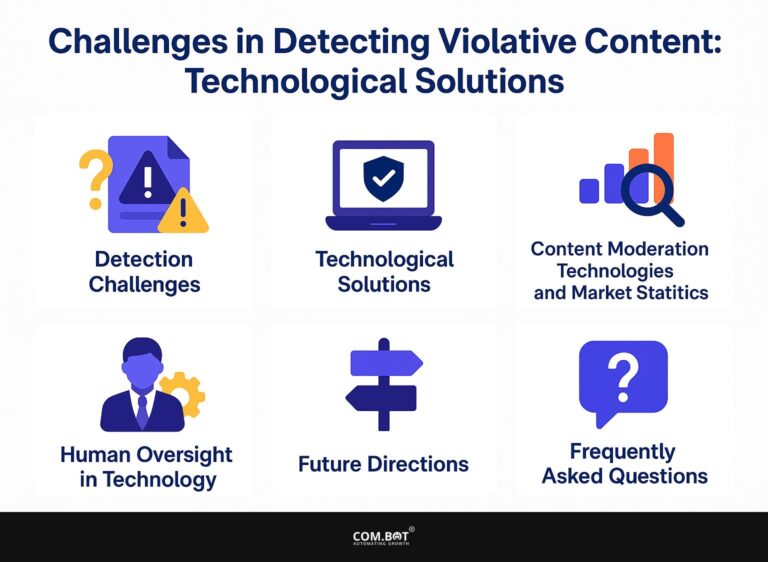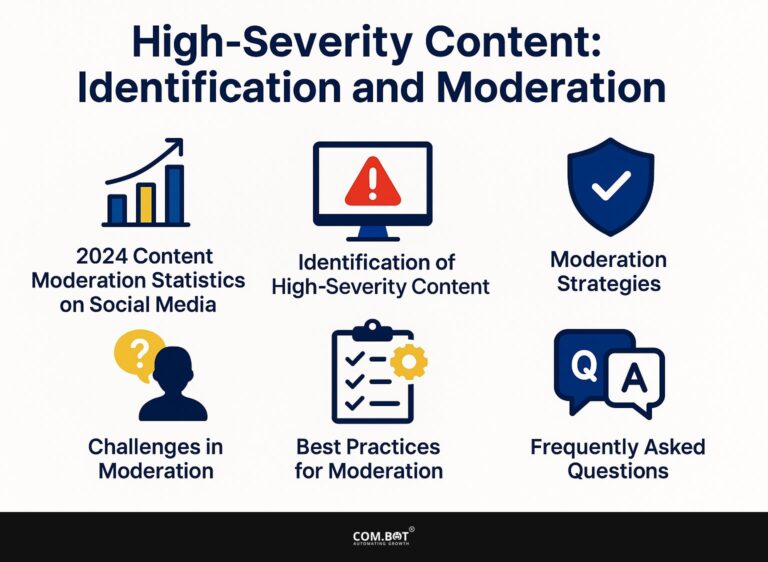Hate Speech Detection on Instagram: Challenges and Solutions
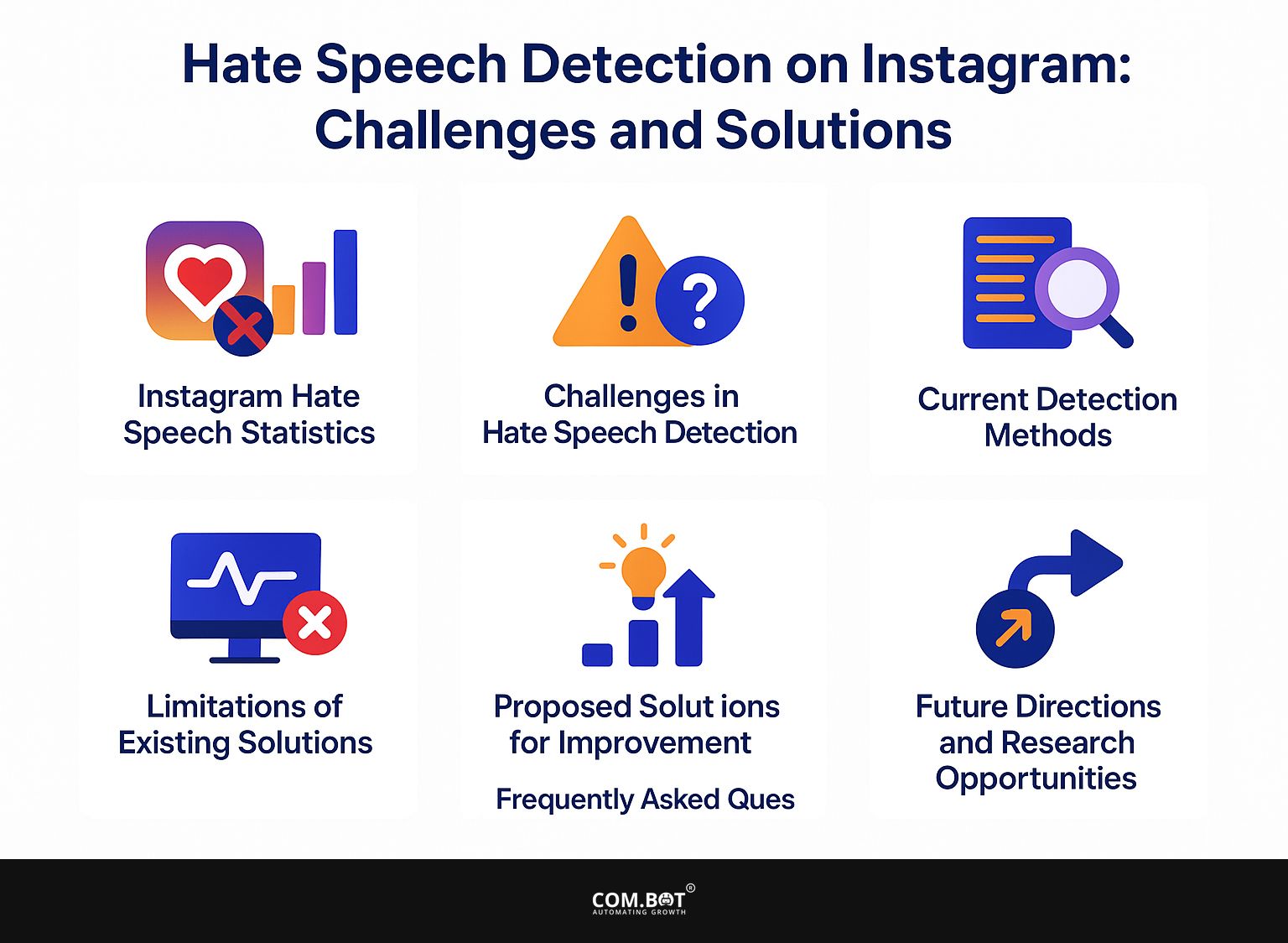
Hate speech on social media, particularly on platforms like Instagram, poses a significant challenge for automatic detection systems. As conversations around the First Amendment and online expression evolve, identifying hate-related posts becomes increasingly complex.
This article looks at the challenges in speech detection, including unclear language and large amounts of content, and suggests new ways to improve detection accuracy. Learn how we can make online spaces more secure while still allowing free speech.
Key Takeaways:
- The ambiguity and cultural context of language pose challenges in detecting hate speech on Instagram.
- Current methods for hate speech detection, such as keyword-based approaches, have limitations such as false positives and ethical concerns.
- Suggested solutions for improvement are better machine learning models and user feedback systems. Upcoming research could involve working with language experts and using feedback from users.
- 1 Instagram Hate Speech Statistics
- 2 Challenges in Hate Speech Detection
- 3 Current Detection Methods
- 4 Limitations of Existing Solutions
- 5 Proposed Solutions for Improvement
- 6 What’s Next and Areas for Study
- 7 Frequently Asked Questions
- 7.1 1. What is hate speech detection and why is it important on Instagram?
- 7.2 2. What are the challenges of detecting hate speech on Instagram?
- 7.3 3. How does Instagram currently detect hate speech?
- 7.4 4. Are there any solutions being implemented to improve hate speech detection on Instagram?
- 7.5 5. Can users also play a role in detecting and reporting hate speech on Instagram?
- 7.6 6. Are there any consequences for users who engage in hate speech on Instagram?
1. Definition and Importance
Hate speech, defined as any communication that belittles or incites violence against a group based on attributes such as race or religion, poses significant societal concerns. This issue reached a critical point in 2021, with reports indicating a 50% increase in hate-related posts on social media platforms.
The American Bar Association stresses the importance of clear definitions and strong rules to fight hate speech successfully. Platforms need to use tools like content moderation algorithms and user reporting systems to quickly deal with rule-breakers (related insight: Meta AI: Role, Tools, and Limitations in Content Moderation).
Informing people about how targeted groups experience more anxiety and depression can help create a more welcoming online space.
2. Overview of Instagram’s Role
Instagram, with over 1 billion users, serves as a significant platform for hate speech dissemination, particularly due to its visual nature and user-generated content. The platform is increasingly scrutinized for how images and videos can propagate harmful messages.
A report showed that nearly 50% of users had encountered hate speech on Instagram, with high-profile cases involving hate campaigns against marginalized groups drawing public outrage.
For example, there have been organized attacks against the LGBTQ+ community, showing that the platform is spreading these harmful narratives. To combat this, Instagram has started implementing stricter policies, including improved reporting tools and AI filters, aiming to reduce hate speech and promote a safer online environment.
For an extensive analysis of these tools and their effectiveness, our deep dive into Meta AI’s role in content moderation highlights both the capabilities and limitations of current strategies.
Instagram Hate Speech Statistics
Instagram Hate Speech Statistics
Hate Speech Incidents and Handling: Abusive Comments Handling
Hate Speech Incidents and Handling: Content Moderation
The Instagram Hate Speech Statistics data provides a revealing look into the platform’s current challenges and responses to managing abusive content. It highlights how well different content moderation methods work and where they fall short, especially in dealing with hate speech and the methods used to manage such situations.
Hate Speech Incidents and Handling highlight significant issues concerning abusive comments. A staggering 93% of abusive comments are not removed, indicating a substantial gap in the platform’s moderation efforts. This figure is similarly high for specific targets, with 87.6% of abusive comments about Kamala Harris not being removed. These figures indicate that existing moderation systems, whether done by people or by machines, frequently do not manage offensive content effectively, allowing most harmful comments to remain visible and unanswered.
Content Moderation data looks at how Instagram manages hate speech. Notably, only 5% of hate speech is user-reported, which suggests either a lack of user engagement in reporting mechanisms or perhaps disbelief in the efficacy of the reporting process. Meanwhile, an encouraging Automated systems identify 98% of hate speech., showing that Instagram heavily relies on technology to identify offensive content. However, these systems might not work well, as many abusive comments are still on the platform.
Another critical statistic is that 40% of content is reinstated after removal. This high reinstatement rate might indicate problems with errors in automatic detection, where content that is not offensive is incorrectly flagged and taken down. These situations can weaken user confidence and show the need for better algorithms to tell the difference between real hate speech and incorrect reports.
Overall, the data shows the difficulties in controlling hate speech on Instagram. Even though automated detection systems are good at spotting possible hate speech, the ongoing issue of abusive comments and high rates of reinstatement show that better moderation methods are needed.
This could involve improving algorithms, encouraging users to report issues, and balancing automated and human oversight to improve the platform’s way of dealing with hate speech.
Challenges in Hate Speech Detection
Finding hate speech is difficult because language can be unclear and it shows up in many different situations.
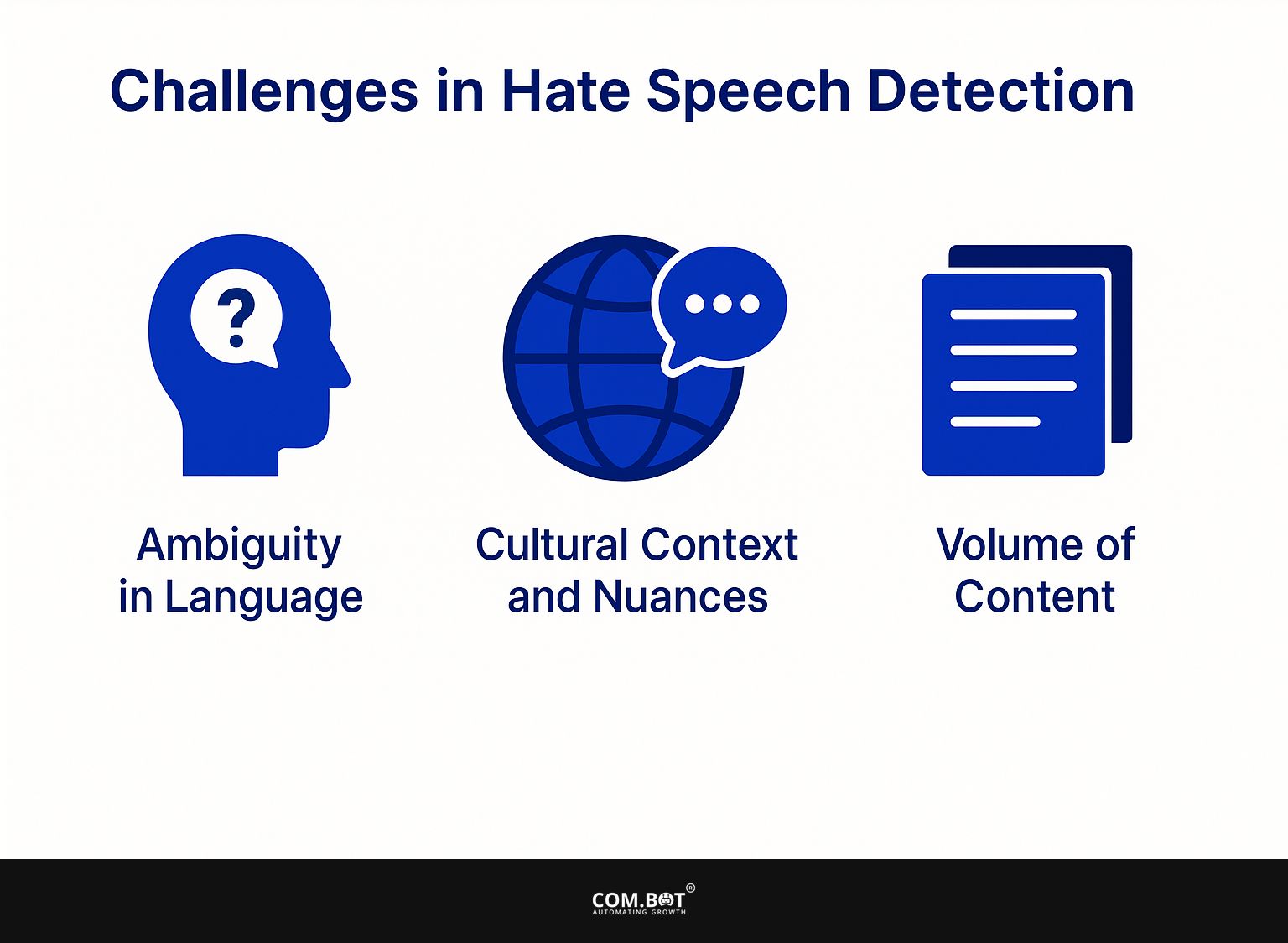
1. Ambiguity in Language
The unclear nature of language and the subtle differences in expressions make it hard for automatic systems to identify hate speech. Context is key; for instance, the phrase ‘That’s so gay’ can be interpreted differently in various settings, affecting its classification as hate speech.
Tools like Hatebase help in creating detailed lexicons by incorporating context-specific phrases. By studying language patterns on social media, it provides information on how specific words change over time.
Users can create rules to regularly update their word lists with real-time data, improving accuracy in detection. Training AI models with carefully selected datasets that include different scenarios improves their skill in distinguishing hate speech from harmless comments.
2. Cultural Context and Nuances
Cultural background greatly affects how hate speech is understood, highlighting the need for specific detection techniques. It’s important to know local cultural factors to create good hate speech detection algorithms.
For example, using datasets like TRAC (Terrorism, Radicalization, and Conflict Dataset) or HatEval can improve the model’s results. These datasets include diverse examples specific to various cultures, helping to train algorithms that recognize context.
Having local experts in training sessions can provide knowledge of cultural details that datasets might overlook. This method increases reliability and fosters public confidence in computer-controlled systems.
3. Volume of Content
The sheer volume of content generated on platforms like Twitter and Facebook makes it difficult to effectively monitor and moderate hate speech.
Every minute, about 500,000 tweets and a large number of Facebook posts are shared, creating a challenging job for those who manage content.
Google’s Perspective API detects potentially harmful comments, helping teams focus on the most important ones. Platforms can implement user reporting systems coupled with machine learning algorithms that prioritize flagged content for human review. By using these approaches together, companies can improve their moderation methods and keep online spaces safer.
Current Detection Methods
Present methods for identifying hate speech mainly use keyword recognition and machine learning to spot inappropriate content. However, challenges like AI bias in these systems can affect accuracy and fairness. Curious about how AI bias impacts content moderation? Our analysis explains the key factors in AI Bias in Content Moderation: Examples and Mitigation.
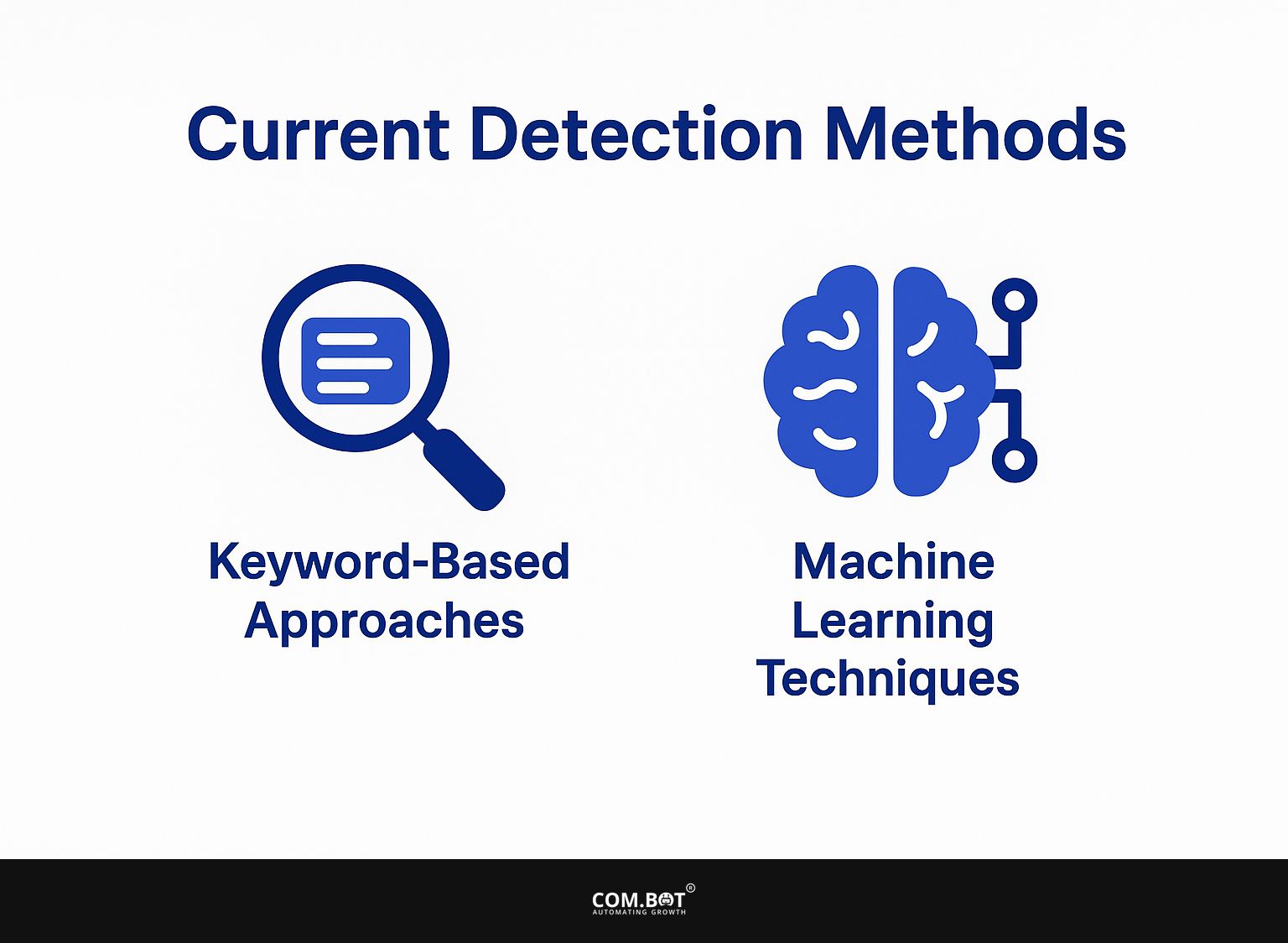
1. Keyword-Based Approaches
Keyword-based methods are popular, but they often miss some hate speech because they don’t consider context. These methods rely heavily on predefined lists of keywords, which can lead to misidentifications.
For instance, words like “kill” may appear in innocuous contexts, resulting in false positives. On the other hand, small details in statements, like subtle sarcasm, can be missed.
To find problems more easily, you can use keyword filters and machine learning tools such as Google’s Perspective API, which checks the tone of sentences. By reviewing user reports, keyword lists can become more effective at finding harmful language.
2. Machine Learning Techniques
Machine learning methods provide advanced ways to detect hate speech by examining patterns and the way language is used in text. Support Vector Machines (SVM) are often employed for hate speech classification due to their ability to create clear boundaries between differing classes of text.
For instance, models trained on Kaggle datasets have successfully achieved over 90% accuracy. Neural networks, especially recurrent neural networks (RNNs), work well at interpreting the meaning by looking at word sequences.
Accurate labeling matters-using multiple annotators and tools to find common ground ensures high-quality results. This method improves how the model works and offers a strong structure for continuous development.
Limitations of Existing Solutions
Even with progress, current hate speech detection tools have significant gaps that can reduce their effectiveness and cause ethical issues.
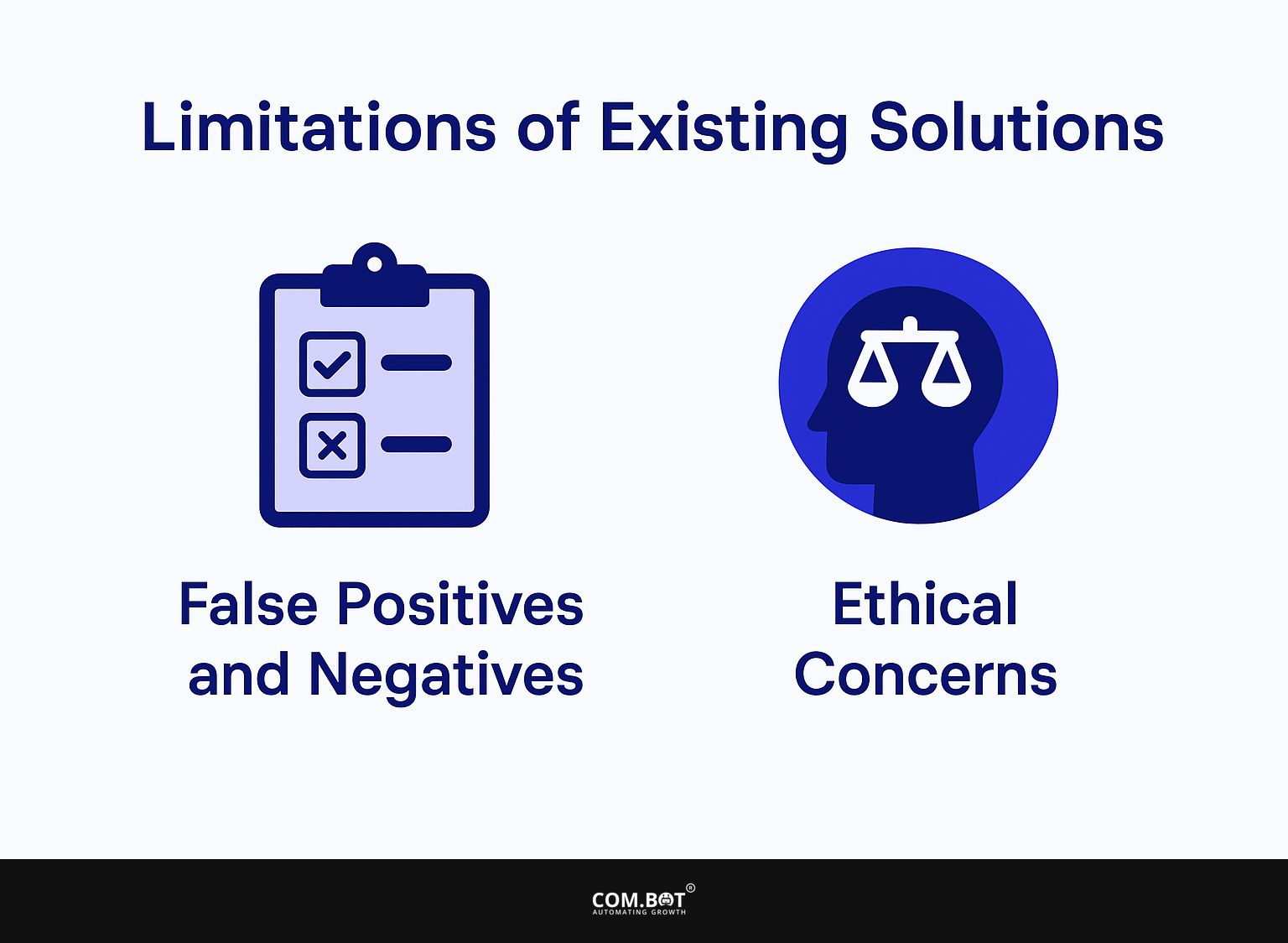
1. False Positives and Negatives
False positives and negatives represent significant challenges in hate speech detection, often leading to user dissatisfaction and inadequate moderation.
For example, a false positive occurs when an innocent comment is flagged as hate speech, potentially alienating users and stifling genuine dialogue. Conversely, a false negative could allow harmful content to remain, undermining community trust. To address these problems, improve your detection models by focusing on measures like accuracy and the capability to spot important data.
A high accuracy rate means most identified content is hate speech, and a high detection rate means fewer harmful posts are missed. Using tools like machine learning libraries (TensorFlow, PyTorch) can significantly increase model accuracy.
2. Ethical Concerns
Ethical concerns about balancing free speech and the need for content moderation make it difficult to set up hate speech detection systems.
For instance, social media platforms often face backlash when moderating content deemed inappropriate. A notable case is the banning of certain conservative voices, sparking debates over censorship versus community standards.
The American Bar Association says the First Amendment protects speech, but the context is important. Software for moderation can be helpful, but it needs careful adjustment to keep both safety and free speech in balance, ensuring users aren’t unfairly silenced while meeting ethical guidelines.
Proposed Solutions for Improvement
To improve hate speech detection, various suggested methods can fix the weaknesses of current systems and help create safer online spaces. One key aspect to consider is the presence of AI bias in content moderation, which can significantly impact the effectiveness and fairness of these systems. Learn more about examples of AI bias and strategies for mitigation to enhance content moderation efforts and promote inclusivity.
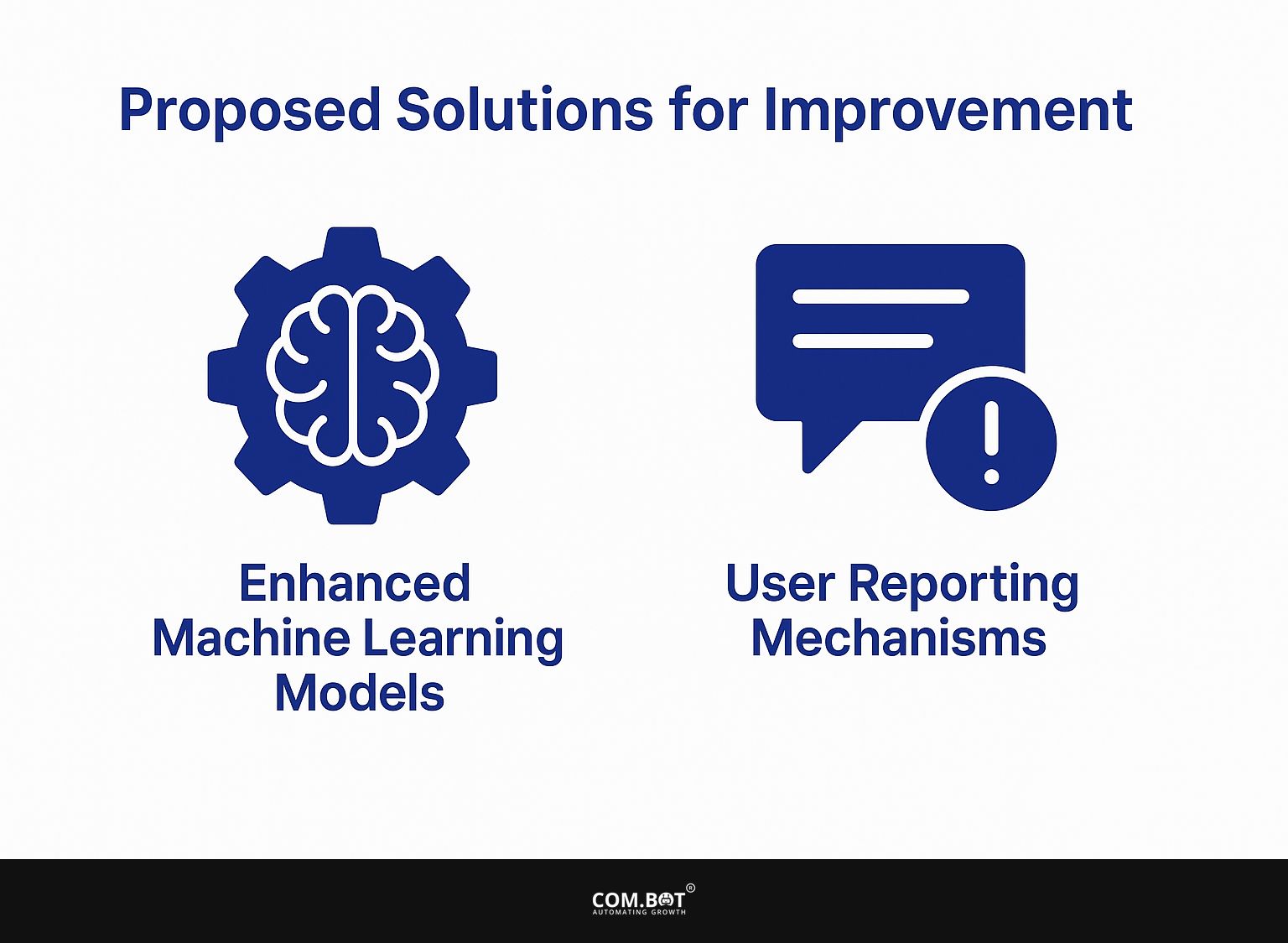
1. Enhanced Machine Learning Models
Improving machine learning models by considering user actions can decrease errors and improve accuracy in detecting hate speech. One effective way to do this is by using deep learning methods, like recurrent neural networks (RNNs), which are great at grasping the meaning of text.
For example, a recent case study involving Facebook demonstrated a 30% reduction in false positives by integrating RNNs with user interaction history.
Reinforcement learning can improve model training by imitating user feedback, enabling systems to change immediately. These methods improve accuracy and help create a safer online environment, making them essential for any progressive way to identify hate speech.
2. User Reporting Mechanisms
Putting in place solid user feedback systems can reinforce communities and provide helpful information to improve automated classifiers. To design effective user reporting systems, start by ensuring transparency in reporting criteria.
Users should understand what types of content they can report and how these reports are processed. Include feedback processes by recognizing user reports and informing them about results.
For example, using tools like Google Forms to collect data makes the process easier, and adding these reports to machine learning platforms like TensorFlow improves model training with real user input. This builds user trust and improves classification accuracy and response quality over time.
What’s Next and Areas for Study
In the coming years, research on detecting hate speech will focus on combining technology and language studies to build better systems.
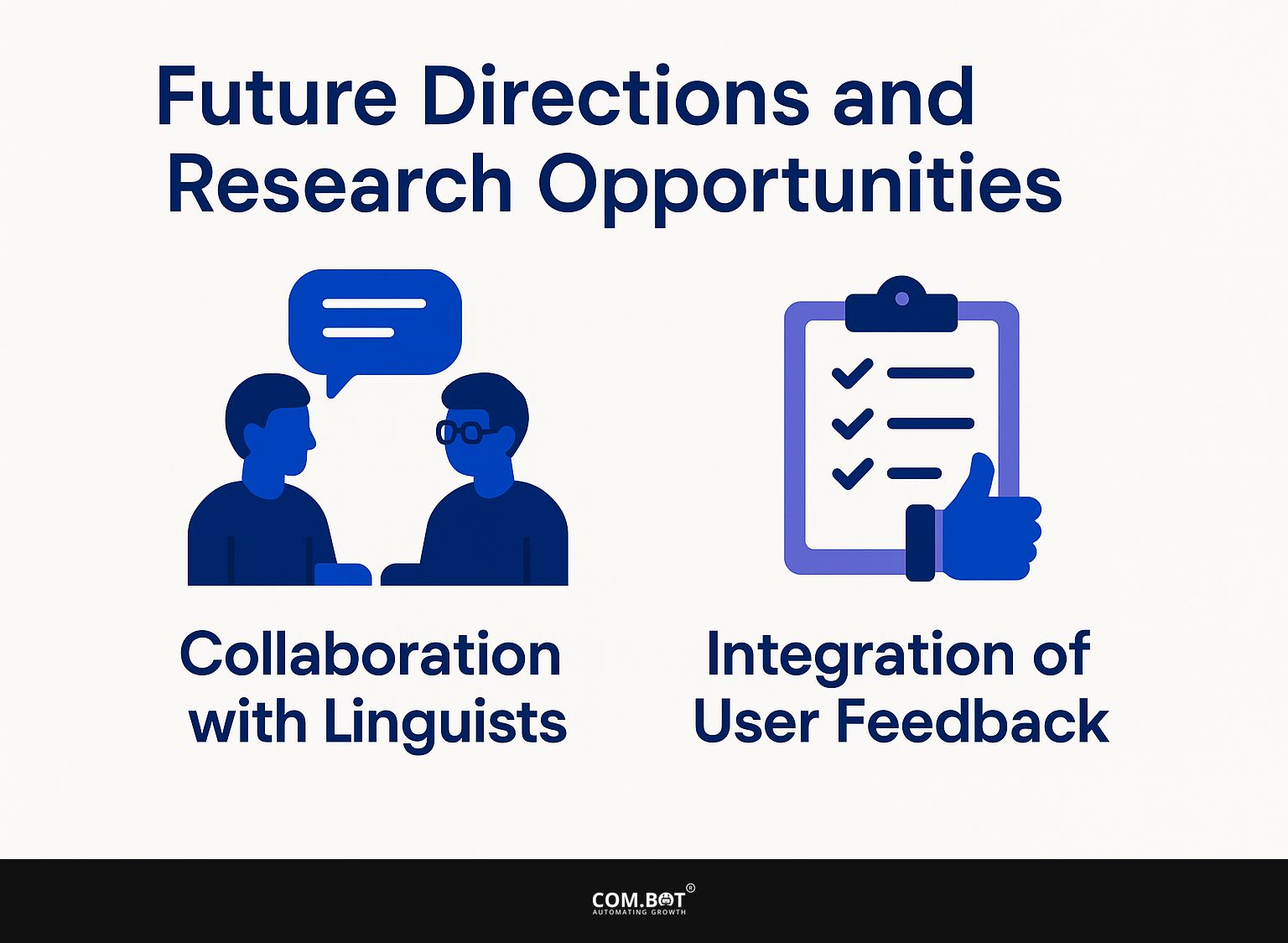
1. Collaboration with Linguists
Working with linguists can improve systems that identify hate speech by using their knowledge of language and culture. Working with language experts helps you create more detailed datasets that capture the full range of language.
For example, they can help understand different dialects and specific meanings, which are important when recognizing hate speech.
Consider reaching out to academic institutions for research grants to fund pilot projects. Field studies can help test and validate models in diverse communities, ensuring accuracy. To take action, organize workshops with language experts to regularly update your models with new language trends.
2. Integration of User Feedback
Using user feedback in hate speech detection systems can improve moderation and make it more aware of context.
Platforms like Facebook and Twitter have implemented feedback loops where users can report inappropriate content. This data is then analyzed by machine learning models, allowing the algorithms to learn from real-time community input.
Using tools like Amazon Sagemaker or Google Cloud AutoML, developers can retrain models regularly with updated user feedback, ensuring the systems evolve with changing language and context. These platforms often update their methods to detect problems using user feedback, making moderation more accurate and faster.
Frequently Asked Questions
1. What is hate speech detection and why is it important on Instagram?
Hate speech detection is the process of identifying and removing content on social media platforms, such as Instagram, that promotes hate speech and discrimination. It is important on Instagram to create a safe and inclusive environment for all users and to prevent the spread of harmful and offensive content.
2. What are the challenges of detecting hate speech on Instagram?
A major problem is the use of hidden language and symbols, making it hard for algorithms to identify hate speech correctly. The large amount of content on Instagram makes it hard to check every post for hate speech. There is also the issue of context, as some posts may seem harmless individually but can contribute to a larger problem when viewed as a whole.
3. How does Instagram currently detect hate speech?
Instagram uses people and computer programs to find and delete hate speech. The platform also uses AI and machine learning algorithms to flag potentially offensive content. However, these algorithms are not yet fully accurate.
4. Are there any solutions being implemented to improve hate speech detection on Instagram?
Yes, Instagram is continuously working on improving its hate speech detection technology. This includes investing in AI and machine learning tools, as well as collaborating with external organizations and experts to develop more advanced detection methods.
5. Can users also play a role in detecting and reporting hate speech on Instagram?
Absolutely. Instagram encourages users to report any hate speech or offensive content they come across on the platform. Users can also use the ‘hate speech’ option when reporting a post or comment, which helps Instagram’s algorithms better understand and detect hate speech.
6. Are there any consequences for users who engage in hate speech on Instagram?
Yes, Instagram has a strict policy against hate speech and takes actions against users who violate it. This can involve deleting the harmful content, temporarily or permanently blocking accounts, and possibly legal actions based on how serious the hate speech is.
